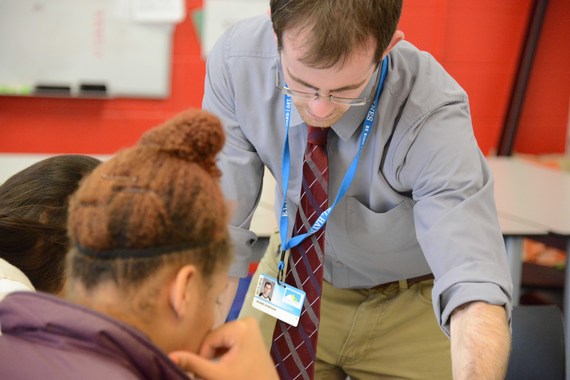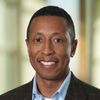When we think about personalized learning, we often focus on the ones absorbing the information--the students, and their individual needs, skills, and interests. This is critical to success. But a powerful learning experience doesn't happen without a great teacher. Teachers play an integral role in personalized learning by building strong relationships with students, activating their curiosity and setting them on their learning paths. In this way, personalized learning is as much about collaboration as it is about customization.
Both of these aspects of personalized learning come to life in teacher Shane Donovan's physics classroom at E.L. Haynes Public Charter School in Washington, D.C. Below, Shane describes how this approach has given him more valuable one-on-one time with students and has helped struggling learners take ownership of their progress. And, throughout all the amazing learning taking place, Shane and his students have a ton of fun.
Across the full spectrum of our work in early learning, K-12, and postsecondary education, personalized learning will be a priority for us in 2016 because we see it consistently working in the field.
***
My physics student W. struggled with my lesson on momentum. He had arrived to school about a month late and hadn't fully mastered the concept of velocity, so this wasn't surprising. One day after school, I asked him what he did when the rest of the class was moving too quickly or too slowly for his liking. W. replied, "Honestly? I just get distracted and do other stuff. Seriously, Mr. Donovan, you already knew the answer to that question."
My class is a collection of wonderful individuals--each with unique interests, learning styles, and pedagogical needs--but traditional schools often force everyone to learn the same thing in the same way, at the same time.

Every teacher knows what this is like--the "sage on the stage" method is built into our school system. But in 2013, I began experimenting with what's called a personalized model: Instead of receiving instruction solely through traditional lessons, students work independently, in small groups, or with me, either one on one or in small groups for their lessons. Students also watch videos and complete practice assignments and labs. There is very little of me standing in front of the class. Everyone accesses their work and tracks their progress through our course website.
Students are required to master a standard before moving to the next one, and if they fail, they can repeat assessments or complete extra practice until they understand a concept. Unlike the traditional model that had left W. behind, this allows each student to access content that is at their level and move through it as quickly or as slowly as they need to.

W. embraced this new method wholeheartedly. In a mid-year interview, he explained that what he most appreciated about the shift was how he got one-on-one time with me, in which I could help him with his particular needs and build a relationship with him. I was able to connect our physics content to his interests in basketball and boxing, as well as to his lived experiences with moving objects in his daily life. Of course, a teacher can do this in a traditional classroom as well, but the flex model allowed me to spend time with W. without simultaneously worrying about what the rest of the class was doing; everyone had work in front of them that they could be doing without the direct instruction of a teacher. Though I only had these check-ins with W. once every two or three days, their quality was much higher than the brief spot-checks that a teacher is often forced to use in a traditional classroom setting.
W. began dancing every time he mastered an assessment, and once, he actually screamed when he didn't. When I went to remind him to keep his voice down, he interrupted me with a torrent of physics: "Seriously, Mr. Donovan, how is it possible for a woman to have more momentum than the baby she is pushing in a stroller if they have the same velocity? She has way more mass than the baby!" I didn't say anything about the screaming; instead, I double-checked the answer key for his quiz--and discovered I had typed in the wrong letter as the correct answer. I showed him. "I KNEW that I knew it!" he said, grinned, and opened the assignment for the next standard.
-Shane Donovan
Shane Donovan is a high school physics teacher at E.L. Haynes Public Charter School in the Petworth area of Washington, D.C. Prior to that, he taught physical sciences, physics, and civics at Fels High School in Philadelphia. He graduated magna cum laude from Harvard College in 2009 with a degree in social studies and French, and he earned a Master of Education from the University of Pennsylvania in 2011. Shane was a member of the inaugural cohort of CityBridge Foundation's Education Innovation Fellowship in 2013.
